The draft Political Report submitted to the 14th National Party Congress is not only a summary of the past term, but also a strategic mission for the country in the next development period.
Evaluating the draft document, experts and scientists said that the content needs to have a strategic vision, both inheriting past experience and proactively innovating to suit the domestic and international context.
The document must be a scientific work that crystallizes the theoretical level and intellectual height of the entire Party, the beliefs and aspirations of the entire nation; at the same time, it must accurately reflect reality, from achievements to shortcomings, transforming the vision into specific goals, tasks and solutions, capable of implementation and measurement.
Driving force for sustainable national development
After 8 years of implementing Resolution No. 18-NQ/TW on "Continuing to innovate and streamline the political system's apparatus to operate effectively and efficiently," the state apparatus has undergone remarkable changes.
Many focal points have been merged, reducing more than 100,000 staff, significantly streamlining the intermediate levels. However, there are still shortcomings and limitations that need to be thoroughly overcome in the coming period.
According to Professor, Dr. Nguyen Quoc Suu, Deputy Director of the Academy of Public Administration and Management, the country is entering a period of strong streamlining of the entire political system, requiring the apparatus to be reorganized in a more effective, efficient and responsible direction.
However, the actual implementation of the two-level local government model is revealing three major challenges that need to be overcome.
The Deputy Director of the Academy of Public Administration and Management said that after switching from a four-level model (central, provincial, district, commune) to a three-level model (central, provincial, commune), the redefinition of decentralization is still unclear.
Professor, Dr. Nguyen Quoc Suu said that the next step, the 14th Congress documents need to more clearly demonstrate the "philosophy of decentralization and decentralization," aiming to give real power to localities along with a strict power control mechanism.
"If localities want to have the right to decide, act and take responsibility, their authority must be clearly defined in the law," Professor, Dr. Nguyen Quoc Suu emphasized.
Analyzing the challenges, Professor, Dr. Nguyen Quoc Suu said that the process of streamlining the apparatus, increasing workload but the income, allowances, and benefits of grassroots cadres do not change, it is difficult to motivate. Therefore, it is necessary to have incentive policies and take people's satisfaction as the evaluation criteria.
Recommending that the draft document should include a summary of the major tasks that have been carried out in 2025, especially the building of an effective, efficient and effective public administration, Professor, Dr. Nguyen Quoc Suu emphasized that the spirit of "dare to think, dare to do, dare to take responsibility" must be concretized into "dare to decide" in action. When the problem is ripe and there is high consensus, we must dare to decide immediately!
Agreeing with this view, Associate Professor, Dr. Nguyen Ngoc Toan, Director of the Institute of Economics and Politics (Ho Chi Minh National Academy of Politics) emphasized that streamlining the apparatus is not only an administrative technical requirement, but also an institutional pillar in building a socialist rule-of-law state.
When the operating apparatus is lean, transparent, and power is controlled, that is the fundamental condition for sustainable socio-economic development. Streamlining the apparatus is therefore not just “making it smaller,” but making it stronger, more flexible, and more effective.
Lean manufacturing makes strategic sense in many ways.
First, enhancing the effectiveness of national governance. When intermediary layers are shortened, the decision-making process is streamlined, and decisions can reach people and businesses faster and more effectively.
Second, saving resources and reducing administrative costs. A streamlined apparatus means reducing budget expenditures on salaries and auxiliary apparatus, thereby creating more resources for investment in development.
Third, promote the spirit of responsibility, innovation, and creativity: When authority is clearly assigned and responsibilities are specifically defined, each cadre and civil servant must be proactive, creative, and dare to take responsibility instead of relying on or waiting. Fourth, create an administrative system that serves the people.
Institutions - the "first breakthrough" of three strategic breakthroughs
Commenting on the draft document, Associate Professor, Dr. Vu Thi Phuong Hau, Director of the Institute of Culture and Development (Ho Chi Minh National Academy of Politics) said that the strategic breakthrough in high-quality human resources identified in the 13th Congress Document is the key to development, but in recent times it has not yet played its proper role.
The biggest limitation lies in awareness and approach. Although the Party has consistently considered people to be the center of the development process, many levels and sectors have not yet truly absorbed this viewpoint.
Considering that we still evaluate human resources based on degrees and not on creativity and practical ability, Associate Professor, Dr. Vu Thi Phuong Hau emphasized that although the mechanism for employing and attracting talents has been improved, it is not attractive enough. The coordination between the State, schools, scientists and businesses is still loose. The working environment in the public sector is still rigid, lacking the motivation to encourage creativity and dedication.
At the same time, Associate Professor, Dr. Vu Thi Phuong Hau suggested that the draft documents of the 14th National Congress add a group of solutions strong enough to make use of, encourage creativity and promote the role of public sector talents, considering this the key to national development in the new period.
Associate Professor, Doctor Tao Thi Quyen, Deputy Director of the Institute of State and Law (Ho Chi Minh National Academy of Politics), said that “Completing the synchronous institutional system for rapid and sustainable national development” is one of the 13 major orientations stated in the Draft Political Report. This is a strategic thinking that demonstrates the Party’s clear vision, when considering institutions as a breakthrough and key issue in the country’s development process.
The three basic elements that make up a development institution include: The system of policies, laws and standards - creating a legal corridor for social relations; Organization and operation of the subjects - including the Party, the State, the Fatherland Front, socio-political organizations and the people; Operational and coordination mechanisms between subjects - ensuring a unified interactive and operating environment. These three elements create a unified whole, including the rules of the game, players and the playground, thereby forming an institutional environment towards rapid and sustainable development...
The Deputy Director of the Institute of State and Law emphasized that the expression in the Draft Political Report: "Completing synchronous institutions, in which political institutions are key, economic institutions are central, other institutions are important" is a concise, succinct and highly directional expression, consistent with the spirit of a strategic political document, paving the way for a new development stage - rapid, sustainable and comprehensive development.../.
Source: https://www.vietnamplus.vn/the-che-la-van-de-dot-pha-then-chot-trong-tien-trinh-phat-trien-cua-dat-nuoc-post1074637.vnp


![[Photo] Ho Chi Minh City Youth Take Action for a Cleaner Environment](https://vphoto.vietnam.vn/thumb/1200x675/vietnam/resource/IMAGE/2025/11/04/1762233574890_550816358-1108586934787014-6430522970717297480-n-1-jpg.webp)
![[Photo] Panorama of the Patriotic Emulation Congress of Nhan Dan Newspaper for the period 2025-2030](https://vphoto.vietnam.vn/thumb/1200x675/vietnam/resource/IMAGE/2025/11/04/1762252775462_ndo_br_dhthiduayeuncbaond-6125-jpg.webp)

![[Photo] The road connecting Dong Nai with Ho Chi Minh City is still unfinished after 5 years of construction.](https://vphoto.vietnam.vn/thumb/1200x675/vietnam/resource/IMAGE/2025/11/04/1762241675985_ndo_br_dji-20251104104418-0635-d-resize-1295-jpg.webp)

![[Photo] Ca Mau "struggling" to cope with the highest tide of the year, forecast to exceed alert level 3](https://vphoto.vietnam.vn/thumb/1200x675/vietnam/resource/IMAGE/2025/11/04/1762235371445_ndo_br_trieu-cuong-2-6486-jpg.webp)



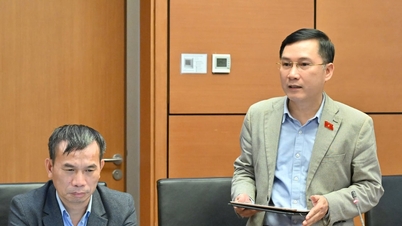

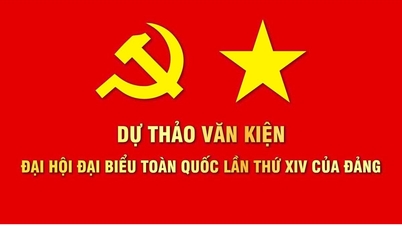
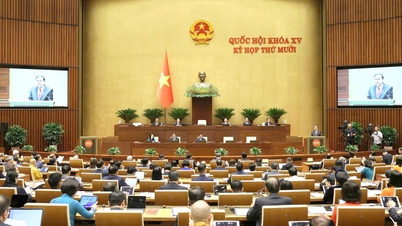







![[Photo] Prime Minister Pham Minh Chinh chairs the 20th meeting of the National Steering Committee on combating illegal fishing.](https://vphoto.vietnam.vn/thumb/402x226/vietnam/resource/IMAGE/2025/11/04/1762267178314_dsc-0115-jpg.webp)

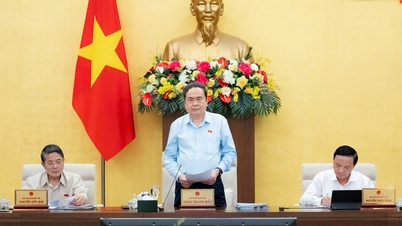








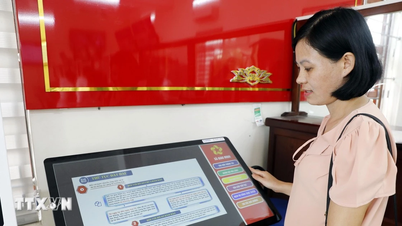
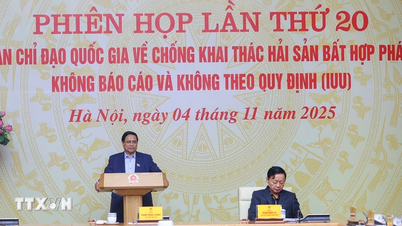
























































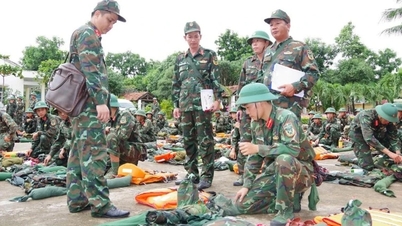














Comment (0)